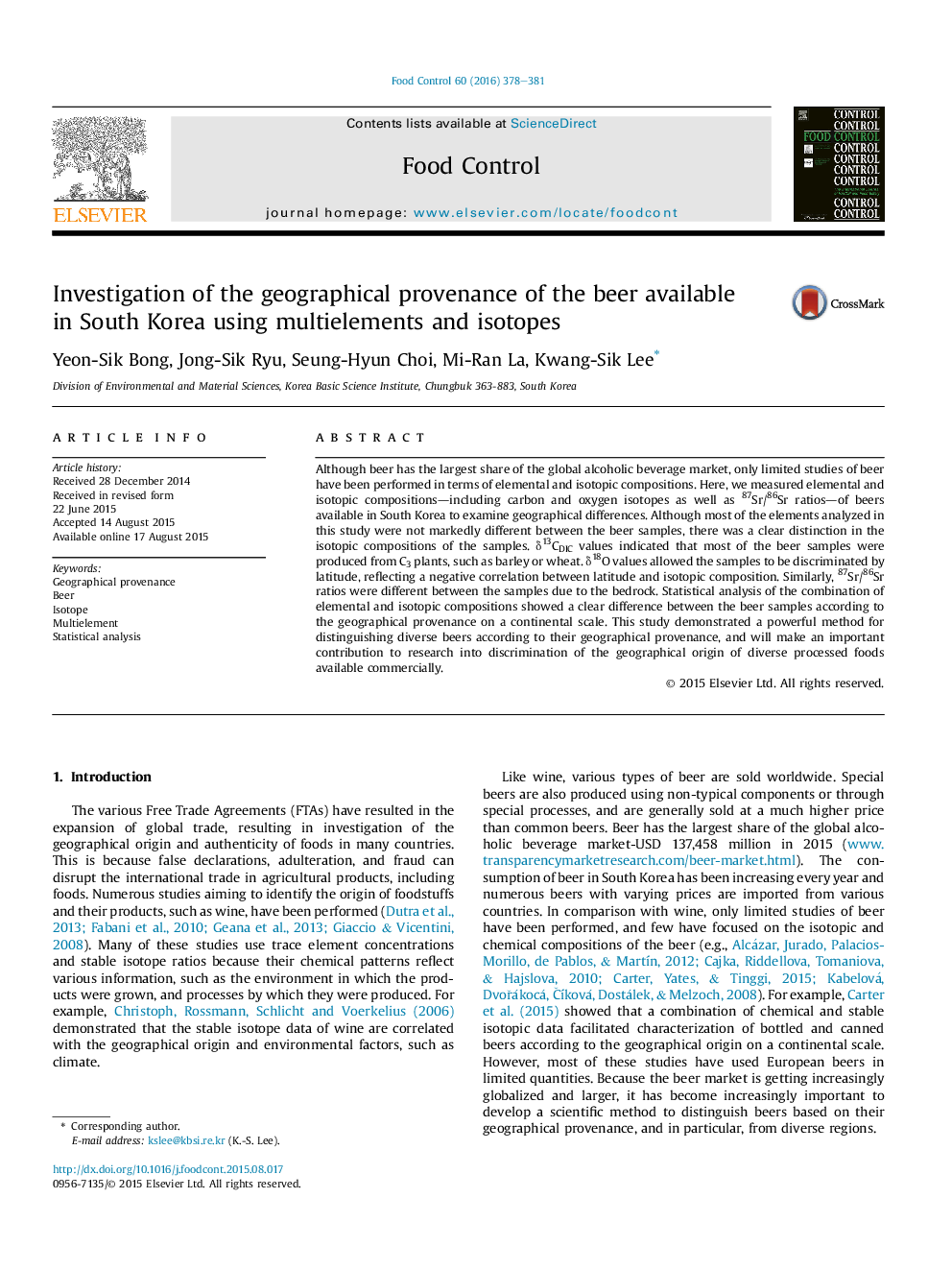| Article ID | Journal | Published Year | Pages | File Type |
|---|---|---|---|---|
| 6390297 | Food Control | 2016 | 4 Pages |
Abstract
Although beer has the largest share of the global alcoholic beverage market, only limited studies of beer have been performed in terms of elemental and isotopic compositions. Here, we measured elemental and isotopic compositions-including carbon and oxygen isotopes as well as 87Sr/86Sr ratios-of beers available in South Korea to examine geographical differences. Although most of the elements analyzed in this study were not markedly different between the beer samples, there was a clear distinction in the isotopic compositions of the samples. δ13CDIC values indicated that most of the beer samples were produced from C3 plants, such as barley or wheat. δ18O values allowed the samples to be discriminated by latitude, reflecting a negative correlation between latitude and isotopic composition. Similarly, 87Sr/86Sr ratios were different between the samples due to the bedrock. Statistical analysis of the combination of elemental and isotopic compositions showed a clear difference between the beer samples according to the geographical provenance on a continental scale. This study demonstrated a powerful method for distinguishing diverse beers according to their geographical provenance, and will make an important contribution to research into discrimination of the geographical origin of diverse processed foods available commercially.
Related Topics
Life Sciences
Agricultural and Biological Sciences
Food Science
Authors
Yeon-Sik Bong, Jong-Sik Ryu, Seung-Hyun Choi, Mi-Ran La, Kwang-Sik Lee,
